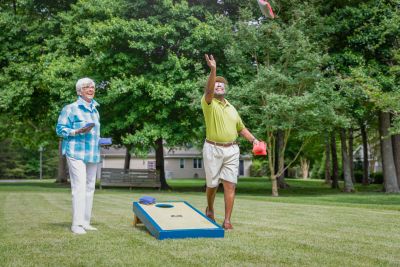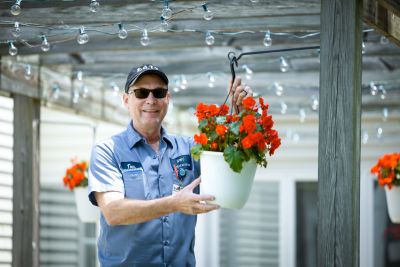 As people reach “senior” status, they and their families may struggle with making living arrangements for the future. One of the biggest questions seniors have is: should they age in place at home, or move to a retirement community? Fortunately, this decision doesn’t have to be fraught with tension. With a little research and thought for the future, you can make the right decision for you and your family. Here’s how to get started on the path to making a good choice—and getting some peace of mind.
As people reach “senior” status, they and their families may struggle with making living arrangements for the future. One of the biggest questions seniors have is: should they age in place at home, or move to a retirement community? Fortunately, this decision doesn’t have to be fraught with tension. With a little research and thought for the future, you can make the right decision for you and your family. Here’s how to get started on the path to making a good choice—and getting some peace of mind.
When Is It Time to Move Into a Retirement Community?
Many seniors ask this question, but the answer is less a factor of time or age than of cost effectiveness and quality of life. The answer also depends on your current individual circumstances and needs. However, it’s important to anticipate your future needs, too, including whether you’ll want to have to move again when you’re older. It’s worth considering that on average, women will need care longer than men, and that by the time you reach age 65, there is a 70% chance that you’ll need some type of support service in the future.
Here are some factors to consider as you decide whether you should stay at home, or whether now is the best time to move into a continuing care retirement community (CCRC).
Factors To Consider
Cost
Pragmatically speaking, it’s essential that seniors compare the costs of staying in their own home to those of moving into a CCRC. In calculating these expenses, remember that the costs of staying at home can include more than your current mortgage payments, property taxes, home insurance payments, utility bills, and repair and maintenance fees. As you age, you may also need to hire lawn care or landscaping contractors, make safety modifications to your home, or enlist support service professionals to help with cleaning, transportation or even personal hygiene needs. All of these expenses can add up in unpredictable ways.
With CCRCs, there are generally only two major costs: the entrance fee and the monthly residence fee. Many services and amenities are often included or discounted in a CCRC contract: food, transportation, security, maintenance and repairs, landscaping and pest control, physical fitness centers, eateries, salons, and social activities. There may also be discounts on things like personal or medical care, which will be available on site when you need them.
 Necessities and Services
Necessities and Services
You should also consider what kinds of services you may need as you age, and how easy those will be to access if you stay in your current home. If you become uncomfortable driving or unable to drive, how will you shop for groceries and other goods? How will you get to medical and other appointments? Even if you currently live within walking distance of some local amenities, it’s likely that others will be too far to walk to or may not be easily accessible via public transportation.
CCRCs offer a wide array of services all in one convenient location. Even if all you need is a little help with household tasks, you can easily get it, with no need to search for the right housekeeping service or to coordinate multiple service providers. You’ll also have access to transportation that will allow you to keep appointments, go grocery shopping, or enjoy local entertainment. It’s much easier to move to a CCRC sooner than later, and active seniors can start with independent living accommodations and get higher levels of care as needed.
Emotional, Cognitive, and Physical Health
Many seniors may feel dismissive at first when they think about moving to a retirement community, assuming they are too young or well-situated to be ready for one. Yet, even if you currently live close to friends and family members, it’s easy to become socially isolated in retirement. This is not only harmful for your emotional health but can increase the risk of physical and cognitive health problems as well. In addition, as we get older, we are more likely to experience other health concerns that will need to be closely monitored.
CCRCs, on the other hand, offer plenty of opportunities for staying physically fit as well as to receive medical care as needed. They are also geared toward creating a strong sense of community: you’ll have friends, neighbors, and social and learning opportunities nearby, without the need to drive to reach them. And in considering emotional health, remember that moving into a CCRC sooner than later can provide peace of mind to you and your family. This can be one of the most powerful and positive retirement community move incentives.
Make Your Best Decision with Rappahannock Westminster-Canterbury
Rappahannock Westminster-Canterbury is a continuing care community (also known as a life plan community) providing the highest quality living experience for discerning senior adults. Situated on 165 beautiful acres outside the village of Irvington in Virginia’s Northern Neck, RWC residents choose to live here for the independent and worry-free lifestyle afforded in a tranquil setting.
Wondering if you’re ready for carefree living with us? Take our 4-5 minute quiz to help you work toward a decision.
Rappahannock Westminster-Canterbury Inc. is a Virginia nonprofit corporation affiliated with the Episcopal and Presbyterian churches. All religions are welcome.
Find out more about living our lifestyle!
